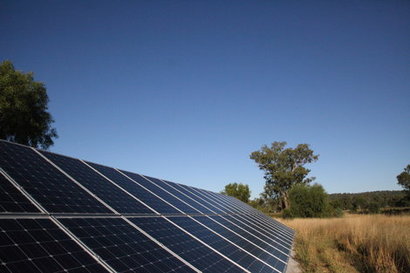
Solar microgrids primarily comprise photovoltaic (PV) panels, a battery energy storage system, an inverter to transform direct current electricity to alternating current electricity and a controller, which helps monitor, manage and optimize the system for maximum reliability.
These grids are transformative for remote or underserved rural communities. With benefits that enhance local economies and the environment, these renewable energy systems could be the path toward a more sustainable future globally.
Solar microgrids can create jobs in rural communities since they require installation and ongoing maintenance. This stimulates the local economy as demand grows for professionals trained in using these systems, and opportunities to gain expertise begin to flourish. In parts of Kenya and Nigeria, the median income has grown fourfold thanks to the introduction of solar microgrids.
Electricity from traditional sources like diesel generators is often more expensive than solar microgrid-generated energy. Fossil fuel-generated energy requires oil, which remote communities typically have to import — a significant expense. Solar microgrids keep revenue local and create a more reliable electricity supply thanks to the battery system that stores excess energy.
Communities or businesses using this more cost-effective method can put money toward other investments with a more long-term impact. For example, a larger portion of a school’s budget could go toward educational resources for students, or a hospital could take the cost savings and invest in new technologies that benefit patients and medical research.
The reliability of rural solar power also leads to economic growth in the agricultural sector, an industry that already navigates unpredictable elements, like weather conditions, seasonal changes, wildlife and pollinator patterns, and consumer demand. Access to stable electricity enables irritation, refrigeration and other agricultural activities. This can lead to higher yields and incomes for farmers using solar microgrid-produced energy.
Switching from fossil fuel-based energy to solar microgrids can reduce budgetary constraints, allowing local organizations to focus on spending that benefits the community.
In addition, this reliable, cost-effective electricity source improves access to education and healthcare. Schools can lengthen their operating hours, and health care facilities can provide enhanced services by extending their hours to offer nighttime medical care. Reliable refrigeration also makes vaccine storage safer.
By providing community energy for consistent lighting, temperature control and functional communication technology, solar microgrids also enhance the quality of life in rural communities, giving people access to essential services, quality food and global information.
The Environmental Benefits of Solar Microgrids
Solar energy can help mitigate climate change by reducing greenhouse gas emissions and minimizing the environmental impact associated with the extraction and transportation of fossil fuels — a finite resource. Thus, solar microgrids have a lower carbon footprint than traditional fossil fuel-based energy sources. Reduced emissions can also improve air and water quality in rural communities, improving residents' overall health.
Solar microgrids can also be part of sustainable land use initiatives. Installing these grids on rooftops or degraded land that’s unable to serve an agricultural purpose makes use of underutilized space. However, when choosing an installation location, decision-makers must avoid shaded or partially shaded areas since the sun moves throughout the day, making these spaces unproductive for solar energy generation.
While solar microgrids come with numerous interlocking benefits, decision-makers and community members should be aware of the challenges to ensure effective implementation and operation.
While solar-powered microgrids often lead to long-term savings, the upfront costs can be high. Producing PV panels and special battery systems is expensive, straining underserved communities with fewer financial resources.
Government subsidies and private investments can support solar microgrid initiatives in rural regions. Community ownership models also pose a solution. In this scenario, a community jointly invests in a project, sharing the risks and rewards as a unit. This also keeps revenue circulating within the community once the investment generates profit, making communities more self-reliant.
While the system’s maintenance opens up new job opportunities, it also presents a challenge. Training requires time and money, and microgrids need ongoing monitoring. While they are reliable when well-managed, the intermittency of solar energy means backup generators and energy storage — obtained from the microgrid’s battery energy storage — are necessary.
Skilled technicians and monitoring systems equipped with artificial intelligence (AI) or Internet of Things (IoT) capabilities can address these challenges. While these solutions cost money, communities can seek funding from corporate partnerships, independent investors, and government grants or subsidies.
Whether intentionally or unintentionally, efforts to serve rural regions can sometimes backfire, exploiting local resources and people. Communities may be skeptical of outside missions that involve a lot of talk but little follow-through. If a solar microgrid’s installation and use don’t consider the community from start to finish, residents may never see any potential benefits.
Communities should be at the center of a solar microgrid project from day one to ensure equitable access to its benefits and long-term support. Residents should be extensively surveyed on their greatest energy needs and concerns so that the initiative focuses on enhancing their quality of life. Community members should also be involved at all levels of a project so that they are making decisions, not just having decisions made for them.
From increased job opportunities and decreased emissions to schools and hospitals that can better serve their communities, there are many benefits of solar energy in rural areas. When common challenges, such as upfront investment, technicality and level of community involvement, are addressed early on, these systems can transform rural regions and the lives of the people who call them home.

